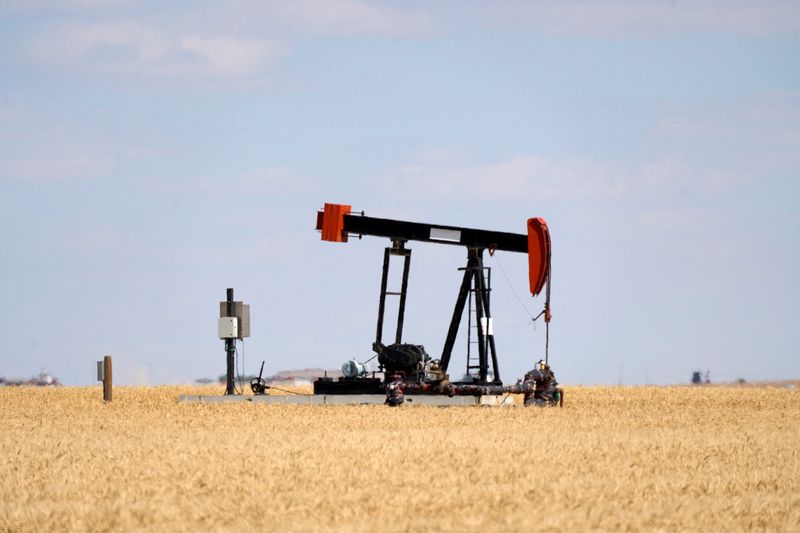Commodities
Oil eases on resuming US output after storm, rising rig count

By Laila Kearney
NEW YORK (Reuters) -Oil prices fell on Friday as U.S. Gulf of Mexico crude production resumed following Hurricane Francine and rising data showed a weekly rise in U.S. rig count.
futures settled at $71.61 a barrel, down 36 cents, or 0.5%. U.S. West Texas Intermediate crude (WTI) settled at $68.65 a barrel, down 32 cents, or 0.5%.
As U.S. Gulf Coast production and refining activity resumes, investors have opted to offload oil contracts going into the weekend, said Bob Yawger, director of energy futures at Mizuho in New York.
“You could come back Monday and everything is fine – the refineries are running at 100%, everyone is back on the platform, oil comes back and gasoline is coming out of the refinery – and the market could potentially pull back exponentially,” Yawger said.
For the week, oil futures finished higher following sharp storm-related increases early in the week, breaking a streak of declines. Brent logged an increase of about 0.8% since the close of last Friday’s session, while WTI registered a roughly 1.4% gain.
Official data showed that, as of Thursday, the storm nearly shut in 42% of oil production in the region that accounts for about 15% of U.S. output.
“These cuts are expected to prove brief and within the broader context are unlikely to spur much movement in the crude balances given the importance of shale production that accounts for the major portion of U.S. output,” Ritterbusch said.
Crude prices also took a hit from the U.S. rig count from energy services group Baker Hughes, which reported the biggest weekly rise in oil and rig in a year. [RIG/U]
The oil and gas rig count rose by eight in the week to Sept. 13 to 590, returning to mid-June levels. The increase was the biggest since the week to Sept. 15, 2023.. rigs rose by five to 488 this week, while gas rigs rose by three to 97.
Also on the week, money managers cut their net long crude futures and options positions in New York and London by 27,493 contracts to 59,741 in the week to Sept. 10, the U.S. Commodity Futures Trading Commission said.
Both the Organization of the Petroleum Exporting Countries and the International Energy Agency lowered their demand growth forecasts this week, citing economic struggles in China, the world’s largest oil importer.

U.S. oil stockpiles also rose across the board last week as crude imports grew and exports dipped, while fuel demand weakened, the Energy Information Administration said on Wednesday.
Investors are looking ahead now to the U.S. Federal Reserve’s two-day policy meeting next week. It is widely expected to cut interest rates on Wednesday.
Commodities
Oil prices rise; U.S. crude inventories plunge, Russia-Ukraine truce eyed
Commodities
India’s Reliance to stop buying Venezuelan oil over US tariffs, sources say
Commodities
Oil prices climb on Venezuela supply worries

 Forex3 years ago
Forex3 years agoForex Today: the dollar is gaining strength amid gloomy sentiment at the start of the Fed’s week

 Forex3 years ago
Forex3 years agoUnbiased review of Pocket Option broker

 Forex3 years ago
Forex3 years agoDollar to pound sterling exchange rate today: Pound plummeted to its lowest since 1985

 Forex3 years ago
Forex3 years agoHow is the Australian dollar doing today?

 Cryptocurrency3 years ago
Cryptocurrency3 years agoWhat happened in the crypto market – current events today

 World3 years ago
World3 years agoWhy are modern video games an art form?

 Commodities3 years ago
Commodities3 years agoCopper continues to fall in price on expectations of lower demand in China

 Economy3 years ago
Economy3 years agoCrude oil tankers double in price due to EU anti-Russian sanctions























